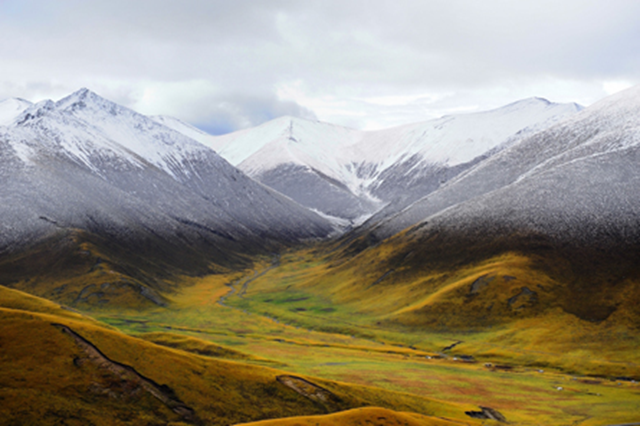Soot hastens snowmelt on Tibetan Plateau
Study suggests black carbon pollution has greater effect than carbon dioxide on region’s ice 
By Janet Raloff
March 8th, 2011 In high-elevation snowy regions, the warming effects of greenhouse gases pale in comparison to those triggered by soot, new computer calculations show. The finding could help explain the accelerating pace of melting on the Tibetan Plateau, which holds the world’s largest reservoir of ice outside of the polar regions. Located north of the Himalayan range, the plateau’s spring meltwater feeds rivers that ultimately slake much of Asia’s thirst. In recent years, spring melting has been starting earlier, triggering downstream floods and shortening the time that irrigation water is available to farmers. Until now, most researchers attributed the earlier runoff to global warming induced by greenhouse gases such as carbon dioxide, says Yun Qian of the Department of Energy’s Pacific Northwest National Laboratory in Richland, Wash. But Qian’s team wasn’t satisfied that carbon dioxide increases were large enough to account for the pace of the spring snowmelt’s advance. So the researchers used a computer program to investigate the melting of snow covered in tiny particles of black carbon — the soot emitted by everything from cookstoves and diesel engines to coal-fired electric power plants. Like a black tarp, these dark particles absorb solar energy and warm the snow beneath. The new simulations indicate that the estimated amounts of black carbon on the Plateau can reduce snow’s reflectivity in spring by 4 to 6 percent. That’s enough to warm the average surface air temperature across the Tibetan Plateau by around 1 degree Celsius, the scientists report online March 2 in Atmospheric Chemistry and Physics. Warming from soot is comparable to the regional warming attributable to the rise in atmospheric carbon dioxide that’s occurred since the 1700s, the researchers note. But soot’s snow melting potency is substantially higher than that of carbon dioxide — some two to five times higher, depending on the elevation and month of the year, the new study finds. …
Soot hastens snowmelt on Tibetan Plateau via Apocadocs